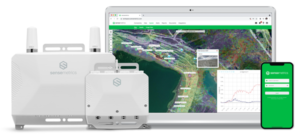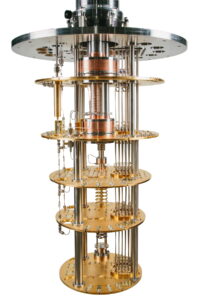Since taking over LCA Group in 2017, Managing Director Alan Sheppard has always maintained a focus on innovation, and the use of cutting-edge technology to further the firm’s manufacturing and assembly capabilities. The primary focus was on the investment in technologies that would speed up client approval processes and improve communication between departments. Since then, EPLAN and Rittal have worked closely with the Hawarden-based electrical engineering firm, supporting the company’s industry-leading turnkey service for electrical engineering projects.
Thanks to this trusted relationship, LCA was chosen to trial the new EPLAN eVIEW solution, which is part of EPLAN’s rapidly growing portfolio of ePULSE cloud-based services. To complement its EPLAN software, the firm has also invested in Rittal’s laser Perforex, Assemblex and Secarex machines.
LCA is a leading engineering company and was recently named the most innovative business in North Wales. From their state-of-the-art facility in North Wales, they provide electrical engineering services to businesses across the country, including project design, manufacturing, installation, commissioning and maintenance. LCA also operates the UK’s first Rittal Automation Systems 3D laser machining centre, which makes it possible for them to provide industry-leading 3D design and manufacturing capabilities for its customers.
Versatile software
Underpinning LCA’s engineering and manufacturing operations is EPLAN’s Pro Panel software, which provides all necessary data for manufacturing like BOMs, drawings and flat projection drawings and integrates automation technologies perfectly in the processes of product development and manufacturing. This applies to the mechanical processing of the cabinet housing components and copper busbars, as well as for the control of machines in the cable and wire assembly. Even future-oriented automation technologies such as automated assembly of terminal strips or the robotic wiring of equipment are supported with the EPLAN Pro Panel package.
LCA also uses EPLAN Smart Wiring, a system that visualises the wiring and makes all wiring data 100% digitally available. Users benefit from a significant drop in the error rate and substantial time savings. This applies to last-minute changes in particular, as the software handles the sometimes complex task of comparing a project’s new state with its previous baseline. EPLAN Smart Wiring’s digital representation refers to the virtual model’s 3D layout in EPLAN Pro Panel.
Efficient processes and smart machines
At LCA, the EPLAN software interfaces directly with Rittal’s advanced manufacturing systems. These include the Rittal Perforex LC 3015 3D laser machining centre, a revolutionary system for the construction of sheet steel panels which automates processes previously done by hand. Using the facilities provided by EPLAN Pro Panel software, which has integrated 3D modelling, the Perforex LC 3015 can be programmed to perform measuring and machining to an extremely high degree of accuracy while processing panels in a fraction of the time previously required for these operations.
A Rittal Secarex cutting centre to cut DIN mounting rails, C rails and cable ducts is also used by LCA. This machine offers considerable cost savings thanks to improved quality and reduced waste rates and is far more efficient than manual cutting. The Secarex centre includes a state-of-the-art operating station with an industrial PC, a 18.5 inch monitor and a keyboard with trackball. It also features pre-defined templates for various sizes of DIN rail and has an integrated label printer for project-related labelling of support rails and cable ducts.
LCA also uses the Rittal Averex system, which is the world’s first robotic wiring centre. This is an automated solution for machinery, control enclosure and switchgear manufacturers that saves time and money by eliminating the need to wire mounting plates manually. The Averex system cuts the wires to the correct length, before stripping them and crimping them with wire ferrules. Then it feeds the wires through the cable duct and attaches them to components such as terminal blocks, contactors and motor circuit breakers.
On average, it takes around 180 seconds to complete this wiring process manually – but Averex finishes the same task in approximately 40 seconds. What’s more, it is exceptionally reliable, using lasers to identify the parts and check their dimensions against the assembly tolerances. Automation reduces the number of required working hours by around 15 per enclosure compared to manual wiring, based on a panel with 300 wires.
The combination of EPLAN and Rittal systems currently being used by LCA significantly accelerates the company’s design and production processes, providing efficiency and productivity that are close to those achieved in mass production environments – even in batch sizes of one!
Cloud-based solutions
Further to this, LCA was recently invited to trial EPLAN’s latest cloud-based products. The new cloud-based collaboration tool, EPLAN eVIEW, makes it easy for designers and customers to work closely together on projects, helping to speed up the design review process as well as reducing the need for design revision and reworking, resulting in substantial cost savings.
With EPLAN eVIEW, engineering projects generated using the EPLAN platform can be accessed directly via the cloud. This means that project data can be viewed anytime, anywhere, by anyone who has been granted access. One of the key features is a red-lining function that lets customers, employees on the shop floor and maintenance engineers add their suggestions for changes. These changes are then instantly accessible to the design engineers.
For LCA, EPLAN eVIEW is already making lengthy design reviews a thing of the past. Unlike most of its competitors, the company’s customers can mark-up drawings online and send their comments back to LCA within minutes rather than hours. In addition, using eVIEW means all drawings are accessed online, reducing the need for physical print outs, which not only saves money but also helps to protect the environment. Another benefit is that it provides a full audit trail showing previous versions, and a full history of change requests including who initiated, approved and made them.
New opportunities
“Working with EPLAN has created new opportunities for our business and has sharpened our focus on implementing innovative technologies, allowing us to situate ourselves as market-leading within our industry” said LCA Managing Director, Alan Sheppard. “EPLAN’s technologies help us maintain our competitive edge and grow, allowing us to deliver projects more efficiently. They also bring important benefits for our customers, which is always a prime consideration for us. We are confident that working with EPLAN will help us achieve even greater success in the coming years, especially as the ePULSE platform continues to develop and expand.”

 Instrumentation Monthly Test | Measurement | Control
Instrumentation Monthly Test | Measurement | Control








 Karl Royce, Senior Quantity Surveyor at CG Godfrey told us, “We have used Powelectrics Metron kit for several years now. It has been reliable and robust from the outset. Our initial trial demonstrated that the kit was a great fit for this application. Installation is intuitive and there is great tech support from Powelectrics whenever we need it. Telemetry allows us to offer exceptional service to our customers and has helped us develop long-term partnerships.”
Karl Royce, Senior Quantity Surveyor at CG Godfrey told us, “We have used Powelectrics Metron kit for several years now. It has been reliable and robust from the outset. Our initial trial demonstrated that the kit was a great fit for this application. Installation is intuitive and there is great tech support from Powelectrics whenever we need it. Telemetry allows us to offer exceptional service to our customers and has helped us develop long-term partnerships.”






